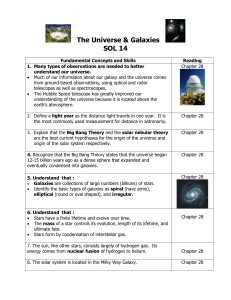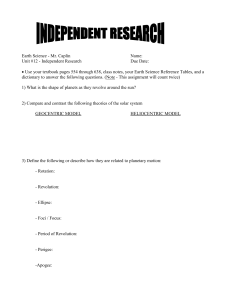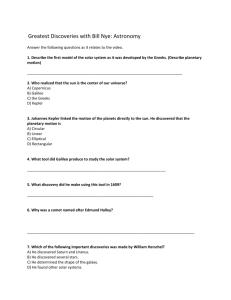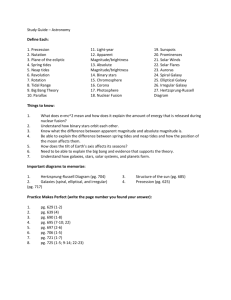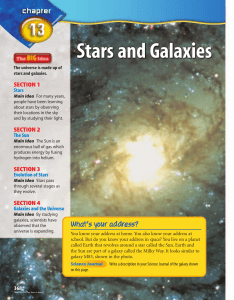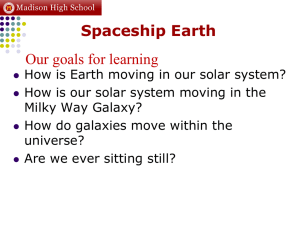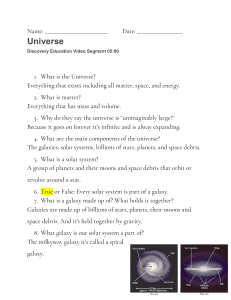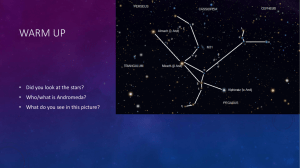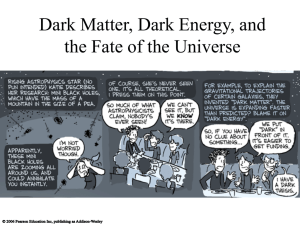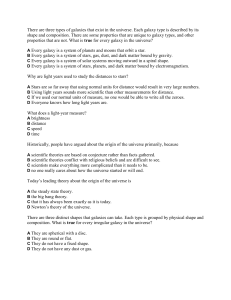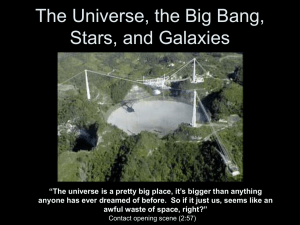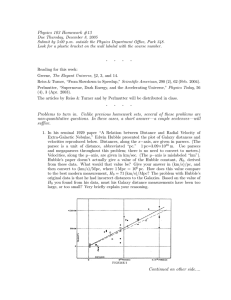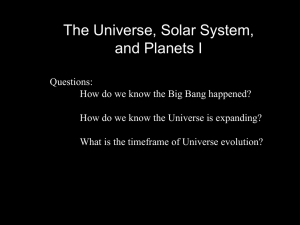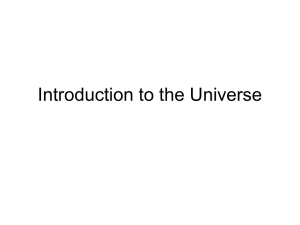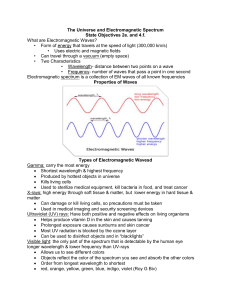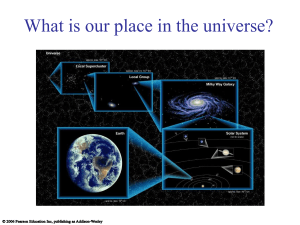5th Six Weeks Accelerated
advertisement
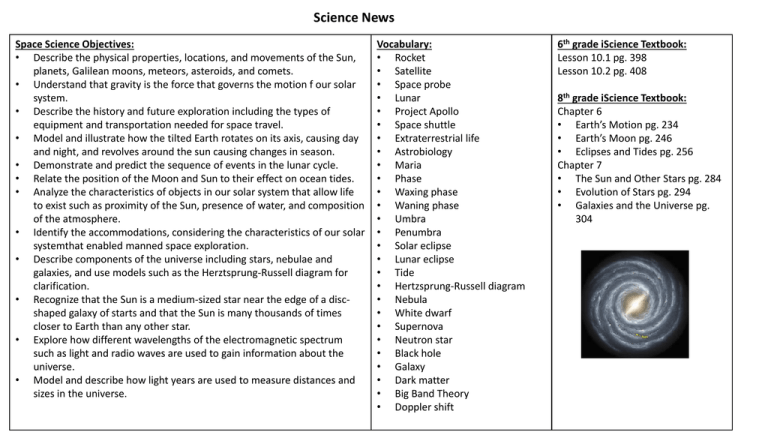
Science News Space Science Objectives: • Describe the physical properties, locations, and movements of the Sun, planets, Galilean moons, meteors, asteroids, and comets. • Understand that gravity is the force that governs the motion f our solar system. • Describe the history and future exploration including the types of equipment and transportation needed for space travel. • Model and illustrate how the tilted Earth rotates on its axis, causing day and night, and revolves around the sun causing changes in season. • Demonstrate and predict the sequence of events in the lunar cycle. • Relate the position of the Moon and Sun to their effect on ocean tides. • Analyze the characteristics of objects in our solar system that allow life to exist such as proximity of the Sun, presence of water, and composition of the atmosphere. • Identify the accommodations, considering the characteristics of our solar systemthat enabled manned space exploration. • Describe components of the universe including stars, nebulae and galaxies, and use models such as the Herztsprung-Russell diagram for clarification. • Recognize that the Sun is a medium-sized star near the edge of a discshaped galaxy of starts and that the Sun is many thousands of times closer to Earth than any other star. • Explore how different wavelengths of the electromagnetic spectrum such as light and radio waves are used to gain information about the universe. • Model and describe how light years are used to measure distances and sizes in the universe. Vocabulary: • Rocket • Satellite • Space probe • Lunar • Project Apollo • Space shuttle • Extraterrestrial life • Astrobiology • Maria • Phase • Waxing phase • Waning phase • Umbra • Penumbra • Solar eclipse • Lunar eclipse • Tide • Hertzsprung-Russell diagram • Nebula • White dwarf • Supernova • Neutron star • Black hole • Galaxy • Dark matter • Big Band Theory • Doppler shift 6th grade iScience Textbook: Lesson 10.1 pg. 398 Lesson 10.2 pg. 408 8th grade iScience Textbook: Chapter 6 • Earth’s Motion pg. 234 • Earth’s Moon pg. 246 • Eclipses and Tides pg. 256 Chapter 7 • The Sun and Other Stars pg. 284 • Evolution of Stars pg. 294 • Galaxies and the Universe pg. 304
